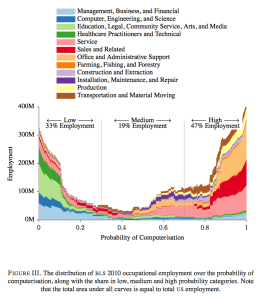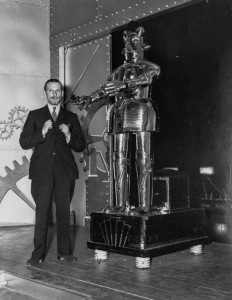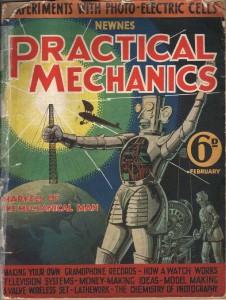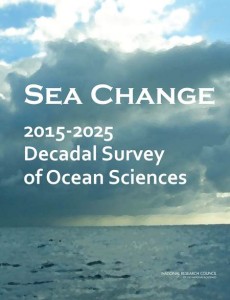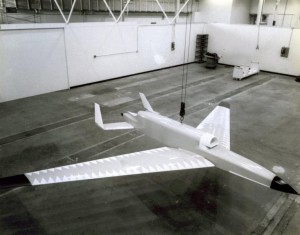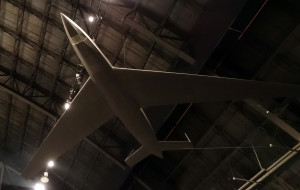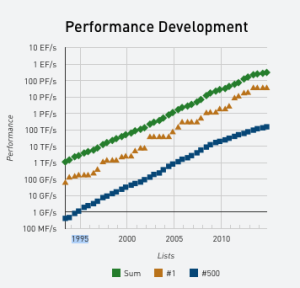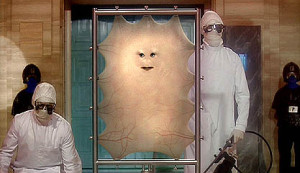| Year |
Music Media Milestone |
| 1877 |
Thomas Edison introduced the first machine that could both record music and play it back, the phonograph, which initially used a metal foil covered cylinder as the media. |
| 1878 |
Patent granted for Edison’s phonograph. |
| 1886 |
Patents awarded to Chicester Bell (cousin of Alexander Graham Bell) and Charles Tainter for an improved phonograph, called the graphophone, which used a hard wax cylinder as the media. |
| 1887 & 1888 |
Patents granted to Emile Berliner for the gramophone, which played a stamped disc record initially made of “Vulcanite” (hard rubber), holding about 2 minutes of music on a disc typically playing at 72 – 86 rpm |
| 1889 |
Pre-recorded wax cylinders hit the market, initially running at about 120 rpm, holding 2 – 3 minutes of music. |
| 1890 |
Shellac flat-disc records introduced, initially 5” diameter, then 7”, 10” and 12”. At 78 rpm, the 10” records held about 3 minutes of music and the 12” records held 4 – 5 minutes of music. The 10” 78 rpm disc became an industry standard in the early 1900s. |
| 1904 |
Valdemar Poulsen presented a paper on the “arc set” transmitter, which produced continuous sinusoidal wave signals that could be used with analog amplitude modulation (AM) for audio transmissions. |
| 1906 |
Victor Talking Machine Company introduced the first “Victrola” 78 rpm disc record player. |
| 1906 |
Lee de Forest invented the three-element (triode) “grid Audion”, which provided the foundation for the development of vacuum tube technology. |
| 1908 |
U.S. patent granted for the grid Audion. |
| 1908 |
Pre-recorded wax cylinders with finer grooves introduced, holding 4 minutes of music. |
| 1912 – 1913 |
Columbia and other manufacturers abandoned the cylinder media format, favoring the disc format. Edison continued manufacturing cylinders until 1929. |
| 1912 – 1917 |
First amateur broadcasts of music radio at a college radio station in San Jose, CA. |
| 1919 |
First commercial radio station 1XE, Medford MA, broadcast music. |
| Early 1920s |
George O. Squier granted patents for a system for transmission and distribution of signals over electrical lines. This technology became the basis for Muzak, a service for streaming continuous music to commercial customers without the use radio. |
| 1927 |
First selective jukebox, capable of selecting and playing more than one record, introduced by Automated Musical Instrument Company, later known as AMI. |
| 1928 |
Fritz Pflumer (Germany) invented magnetic tape for making audio recordings, using paper tape, based on magnetic wire audio recording technology developed in the late 1880s. |
| 1929 |
Last cylinder-playing phonographs and wax cylinder records manufactured by Edison’s Entertainment Phonograph Division. |
| Early 1030s |
Vinyl records introduced, primarily for use by music radio stations. Shellac remained the standard media for retail record albums. |
| 1931 |
Columbia created the first “long-playing” (LP) 33-1/3 rpm record with features similar to the commercial LP records introduced more than a decade later. |
| 1930s |
German firms BASF and AEG developed improved magnetic tape and reel-to-reel machine technologies, resulting in the Magnetophon |
| 1933 |
UK patent issued to Alan Blumlein for stereophonic sound recording and reproduction. |
| 1933 |
Analog frequency modulation (FM) radio patented. |
| 1936 |
First concert recorded on magnetic tape: London Philharmonic Orchestra playing in Ludwigshafen, Germany, hometown of the magnetic tape manufacturer BASF. |
| Late 1930s |
First analog FM radio stations begin broadcasting, including W8HK (Buffalo, NY); W1XOJ/WGTR (Paxton, MA). |
| 1944 |
Ampex Electric and Manufacturing Company founded; acquired German Magnetophon reel-to-reel recorders and BASF magnetic tape. |
| 1947 |
The Bing Crosby Show was the first pre-recorded TV show, using AMPEX Model 200 tape recorders, setting the stage for widespread use of magnetic tape technology for recording and delayed broadcasting by TV & radio stations |
| 1947 |
Transistor invented; enabled later transistor radios and a host of other music delivery platforms. |
| 1948 |
Columbia Records introduced commercial 12” 33-1/3 rpm “micro-groove” vinyl LP records holding about 22 minutes of music, which soon became the standard for albums. |
| 1949 |
RCA introduced the 7” 45 rpm “micro-groove” vinyl record holding 8 minutes of music, which soon became the standard for singles. |
| 1949 |
First pre-recorded music albums on ¼” reel-to-reel magnetic tape introduced in the U.S. |
| 1950 |
Seeberg Corporation introduced the first jukebox for 45 rpm vinyl records. |
| Early 1950s |
RCA Victor and EMI (UK) start selling pre-recorded music albums on ¼” reel-to-reel magnetic tape. |
| 1952 – 1954 |
New York City’s WQXR initiated its first stereophonic broadcasts in October 1952, and by 1954, was broadcasting all of its live music programs in stereo, using its AM and FM stations for the two audio channels (and requiring the listener to have two radios). |
| 1954 |
First commercially-produced transistor radio, the Regency TR-1, introduced by Texas Instruments and Industrial Development Engineering Associates. |
| 1955 |
First transistor car radio, Chrysler Mopar 914HR. |
| 1955 |
Last commercial-volume 78 rpm records produced. |
| 1957 |
Audio Fidelity Records released the first mass-produced stereophonic record. Side 1: Dukes of Dixieland; Side 2 railroad and other stereo sound effects. |
| 1958 |
Mass-produced stereo record albums released by many record companies. Affordable magnetic pickup cartridges for stereo phonographs also became available (price dropped by a factor of almost 10). |
| 1958 |
RCA introduced a short-lived, not-so-compact (5” x 7”) cassette tape cartridge and player, which disappeared from the market in 1964 when a smaller tape cassette format was introduced. |
| 1961 |
GE and Zenith FM stereophonic broadcasting systems (theoretically identical) were formally approved by the FCC as the standard stereo FM broadcasting method in the U.S. |
| 1963 |
Phillips introduced the compact cassette tape, which they licensed free of charge. |
| 1964 |
Compact cassette tape players / recorders, including some portable models, started becoming commonplace, eventually with about 85 manufacturers worldwide. |
| 1964 |
Bill Lear introduced the 8-track tape cartridge and player for home audio and automotive use. |
| early-1970s |
Sales of music on ¼” reel-to-reel tape media rapidly declined after introduction of smaller tape cassette / cartridge formats. |
| 1979 |
Sony introduced the Walkman compact portable compact cassette tape player. |
| 1980 |
Digital compact disc (CD) format standardized. |
| 1981 |
First popular album released on CD: ABBA, The Visitors. |
| 1981 |
Video channel MTV (originally an initalism for Music Television) launched in the U.S. |
| 1984 |
Sony introduced the Walkman compact portable CD player. |
| 1984 |
Columbia House final release of music on ¼” reel-to-reel tape media. Low-volume audiophile market for recordings in this media continued. |
| Late 1980s |
Standards for digital radio transmission defined. |
| 1991 |
Motion Picture Experts Group (MPEG) standard for digital audio (MPEG-1 Audio Layer III) finalized. |
| 1991 |
File extension .mp3 introduced for digital audio files. |
| 1992 |
Sony introduced the short-lived MiniDisc (later supplanted by mp3 players). |
| Early 1990s |
2G digital cellular phone services introduced, including the ability to access media content on mobile phones. |
| Early 1990s |
Two digital audio tape formats, Digital Compact Cassette (DCC) and Digital Audio Tape (DAT) were introduced, but failed to sell in large quantities and never replaced analog cassette tapes. |
| 1993 |
First band to perform live in the internet: Severe Tire Damage, playing at Xerox PARC. |
| 1995 |
DVD and DVD-ROM introduced. |
| 1995 |
Microsoft introduced a media player application that allowed streaming on personal computers (PCs), but only in a proprietary digital file format. |
| 1996 – 1997 |
First portable mp3 players were released, capable of holding a relatively small number of songs (6 – 12 songs in the early mp3 players). |
| 1997 |
Advanced Audio Coding (AAC) format standardized; intended as a replacement for mp3. |
| 1998 |
Improved digital format, MPEG-2 Audio Layer III, standardized. |
| 1998 |
Digital Media Copyright Act (DCMA) signed into law. |
| 1998 |
The first downloadable content sold to 2G mobile phones was the ring tone. |
| 1998 |
The firm Compact Disc Data Base (CDDB) was formed to maintain and license an Internet-accessible database containing information about the contents of audio CDs and vinyl records. The digital track identification service also supports mp3 files. |
| 1999 |
Microsoft and Apple introduced streaming digital media player applications (Microsoft Media Player for PCs, and Apple QuickTime initially for Macs) capable of handling several standard digital file formats. |
| 2000 |
Pandora internet streaming digital radio service introduced and also started the Music Genome Project to support customization of the user’s music experience with Pandora. |
| 2000 |
The firm Compact Disc Data Base (CDDB) was renamed Gracenote. Apple, Sony, and others use Gracenote Track ID services. |
| Early 2000 |
Peer-to-peer (P2P) file sharing web sites, such as Napster, proliferated, and many raised digital copyright issues that led to digital piracy lawsuits from the music industry. |
| 2001 |
Apple introduced iTunes and the iPod, with a 5 GB hard drive capable of holding about 1,000 songs. |
| 2001 |
First commercial 3G digital cellular phone services introduced (in Japan); included better support for streaming. |
| 2001 |
XM satellite digital radio service began in the U.S. |
| 2002 |
FCC selected the digital radio transmission standard for the U.S.: HD Radio, which is a trademarked term for a proprietary in-band-on-channel (IBOC) digital technology that can be used by AM and FM radio stations. |
| 2002 |
Sirius satellite digital radio service began in the U.S. (4 months after XM). |
| 2003 |
Apple opened the iTunes Store (originally iTunes Music Store), which is an on-line digital music retail outlet integrated with the iTunes application. This was Apple’s entry into the music sales business and offering a new music sales paradigm: complete albums or individual tracks of an album, all in AAC format. |
| 2007 |
Apple introduced the iPhone, starting a smart phone revolution and increasing the popularity of streaming and applications on mobile devices. |
| 2007 |
Merger of satellite digital radio service providers formed SiriusXM. |
| 2008 |
Pandora Mobile introduced to deliver personalized digital internet radio service to mobile devices. |
| Around 2009 |
4G digital cellular phone services introduced, including greatly improved media streaming capability. |
| 2012 |
Apple reported 350 million iPods sold thru September 2012, but sales were slowing due to the availability of similar music capabilities on smart phones and other mobile devices. |
| 2013 |
MySXM debuted, providing a personalized interactive online satellite digital radio experience. |
| Now |
Customizable streaming media sites are increasing in popularity and streaming surpasses digital music sales, which have been in decline for several years. Pandora, iHeartRadio, iTunes Radio, and Spotify currently are the top four music streaming sites in the U.S. |
| Now |
A great percentage of Americans still listen to AM / FM radio (91% in 2013), which allows an easy listening experience without having to create (i.e., no music libraries, playlists, or user preference customization). |
| 2017 |
Norway plans to be the first nation to end analog FM radio broadcasts. It will transition to Digital Audio Broadcasting (DAB) as a national standard. |
| Future |
Possible “Zero User Interaction (Zero-UI)” music players that can deliver a customized, varied music listening experience based sensing current activities and other parameters, none of which require user interaction. This won’t be for everyone. |
| Future |
There will still by music aficionados who will choose their own music delivery platform, content, and venue for their own unique music experience. |



